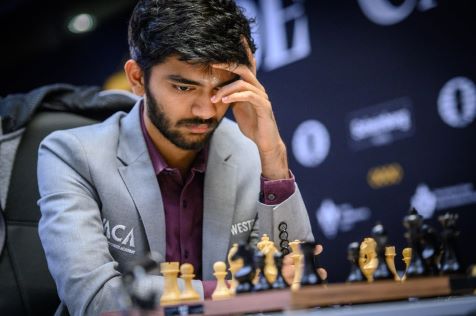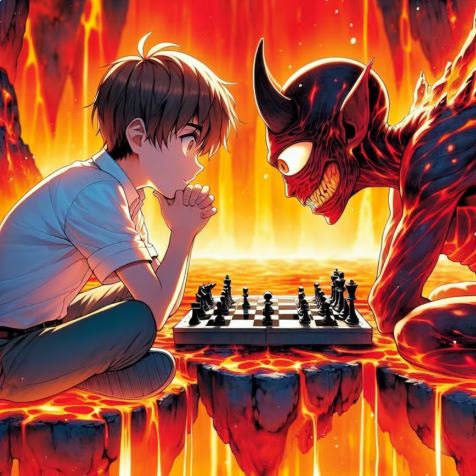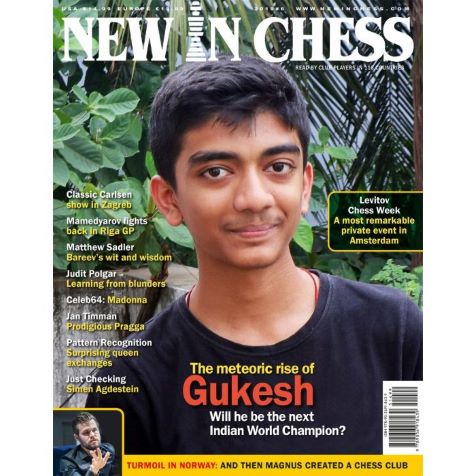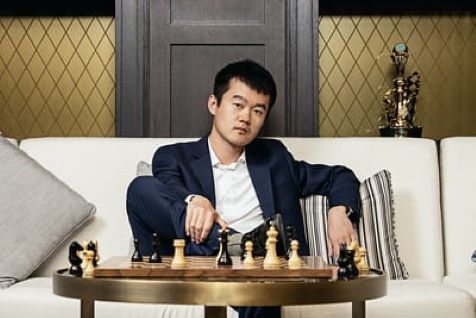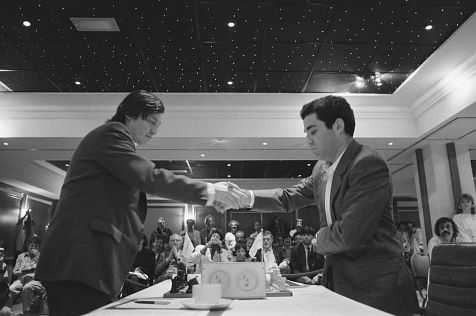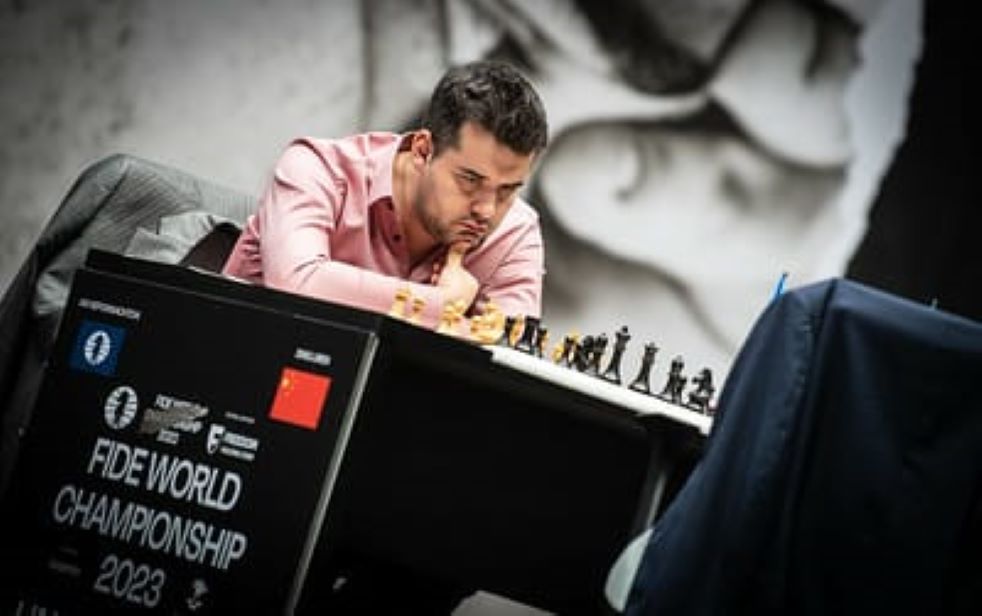
Critical Moments
As the world championship match approached its half-way mark, it was obvious that this is unlike any other world championship match in the recent past. NEVER do we remember both the contestants having scored two wins each in just six games. How do we process this situation?It might be that:
a) both the contestants are playing aggressive but uneven chess, allowing the opponent to create chances – it doesn’t generally happen in world championships. [Refer to Carlsen – Caruana 2018.]
b) games are highly error-prone from both the sides, which is generally rare. World championship 2021 had games with a high incidence of errors, but mostly from Nepomniachtchi’s side rather than Carlsen’s. Which explains Carlsen’s four wins in just 11 games.
c) both players find it difficult to control their nerves, playing under extreme tension, which explains the incidence of errors.
Now, how do we justify the above conclusions? Well, if you are a good reader of games, what are the best junctures to evaluate the quality of the fights? Critical Moments.
What are critical moments and how do we identify them?
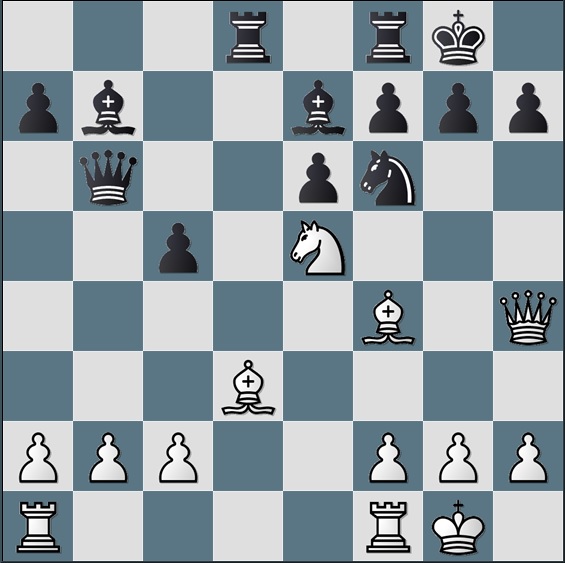
This is from the seventh game Ian Nepomniachtchi – Ding Liren, after Black’s 16...Rad8:
In the long run, it is tempting to say that White has the better pawn structure on the queenside which might mean something. White seems to be mobilizing more pieces on the kingside too, though it doesn’t look threatening. At the same time, Black seem to enjoy a free hand in the centre, especially the d-file.
The most important factor in the position to note is that, there is no tactical contact between both sides, almost. White might drum up an attack on the black king, but Black should be able to mobilize enough resources.
All in all, we can say that White has a minute advantage. But is this a critical position?
No. After all, there is no tactical contact between the forces, and White is not posing any concrete threats that Black has to find narrow paths to defend his position.
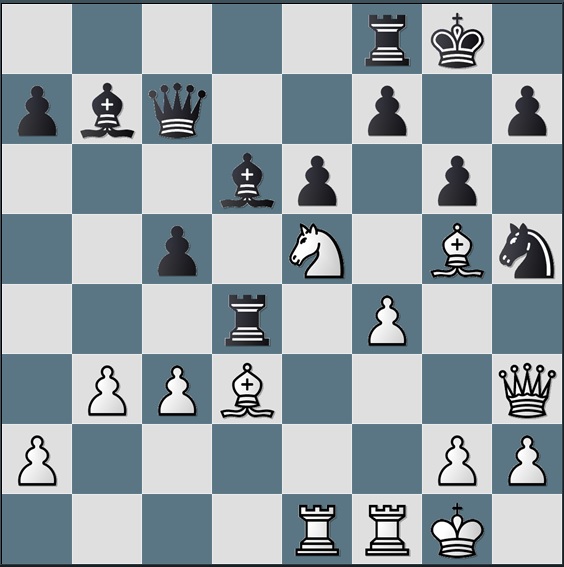
The position after 22.c3 from the same game. An absolute critical moment! The focal point is the black rook on d4, and Black is forced to give it up. The question is, will Black able to sacrifice the exchange and still survive?
Ding played 22...Nxf4! 23.Bxf4 Rxf4 24.Rxf4 Bxe5 25.Rh3 Rd8! and emerged with compensation for the material in the following position:
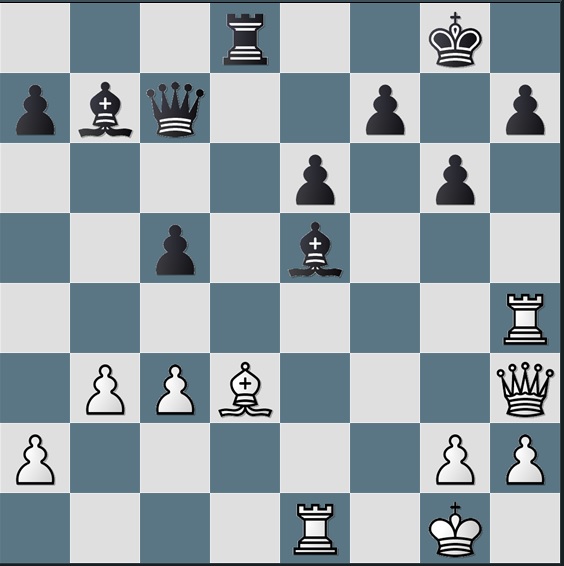
Black escapes against the threat of 26.Rxh7 with the counterstrike 26...Rxd3! Though he has just one pawn for the exchange, his pawn mass in the centre and the powerful dark bishop give him long term compensation. Thus, we can conclude that Ding found his ground when faced with difficulties at the critical moment.
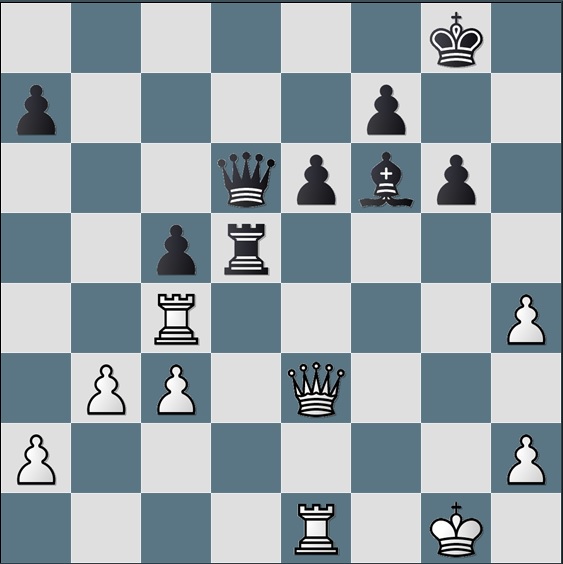
But this is where Ding finally lost his ground. This is a position where Black is obliged to find dynamic compensation for the exchange as he doesn’t have a clear line of attack against the white king. He was obliged to find 32...Be5, with the point that for 33.Re2 he had the tactical retort 33...Bxh2!
However, he went wrong with 32...Rd2 33.Re2 after which Black lost dynamic potential in the position.
Now, what made one of the best players in the world find the best moves consistently but finally go wrong in the third crucial position? It is the difficulty of playing Critical Moments. It is about the difficulty of playing against a formidable opponent who knows how to create relentless pressure? It is about playing a world championship match very well knowing that there is history at stake being made in real-time?
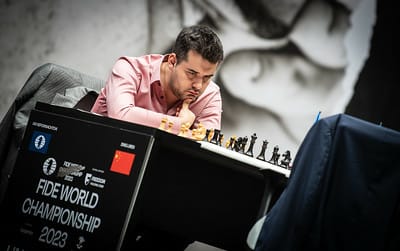
Ian Nepomniachtchi – formidable opponent creating relentless pressure. Picture courtesy: David Llada / FIDE]
Having witnessed Ding wilt under the pressure of taking those crucial decisions, I pick the brains of one of my favourite trainers, GM R.B Ramesh to explain critical moments.
Ramesh is forthright, “Handling critical moments is not easy. The cost of a mistake is very high – this will always play at the back of our mind. Whenever we are worried about the consequences of our decisions, it is not easy to make those decisions.”
How does one face critical moments, and how does one train for them?
Ramesh goes to the basics: “It is important to understand WHEN critical moments. ...and practice take decisions in (those) moments. There are some moments where we can intuitively take these decisions – those moments are easy to find. We don’t require to put effort. But some moments, it will not be so easy – we will have to put a lot of effort and train for them.”
He says, the most important problem of training as well as facing the moment is our minds, which constantly keep reminding us – as well the minds themselves! - ‘If I take a wrong step in this position, I might get into trouble’.
So, in the overall philosophy, how can a player face critical moments, are whatever the challenges that chess offers us?
Ramesh offers the fundamental basic, “Try to remain calm. As calm as possible. It is not always easy. Our mind should be able to cooperate by analyzing variations, churning out variations despite being under pressure. When the cost of mistakes is very high, and we are constantly worrying about the costs of those mistakes, then handling critical moments becomes very difficult.”
Needless to say, Ramesh’s manual on decision making is a good starting point discussing and training on such workouts:

Talk about the pressure of the world championship match where both players are confident they can win, both know they are not the underdogs, and now we can understand the combat we are witnessing between Nepo and Ding! And why so many games seem to be error-prone and decisive. It might be surprising for puritans among us who are used to seeing flawless play and neatly achieved draws in such matches, but the current match is definitely going the exciting way…
Just when we philosophize about the match, the eighth game gets underway:
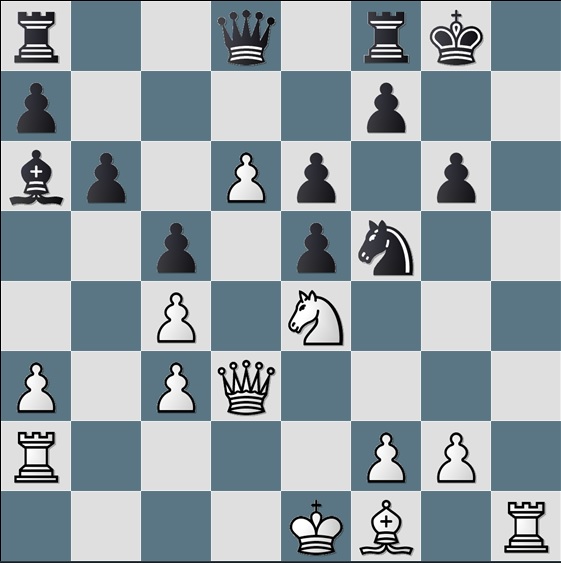
As if aiming to strike back immediately, choosing a sharp and fringe opening variation of the Nimzo Indian, Ding has played dynamically and created a volatile position after a pawn sacrifice for initiative. When you look at the position, you have to note all the important features of the position to understand the undercurrents:
a) White has kept his king in the centre, and doesn’t nurture any hope of taking it to safety in any of the flanks.
b) White has a clear target towards the black king through the h-file.
c) White’s pawn on d6 is a thorn in black’s position. White might be able to combine the strength of this pawn AND an attack on the black king to create deadly tactical threats.
d) The white rook on a2, can join the attack on the kingside on a short notice, though it is not clear about its path to the h-file.
e) If black manages to ward off White’s attack – which at the moment doesn’t seem impossible – he will have a simple win in his hands, due to his material advantage and lack of structural weaknesses in his position.
f) It is always easier to attack than to defend!
g) The engines evaluate the position as 0.00. Of course! But once you understand how engines evaluate the position, you should be able to make the REAL inference: it is indeed possible to defend black’s position, but it is obviously Black who has to make correct decisions in critical moments.
With his previous move 19.Qd3, Ding aims to invade on the h-file with the major pieces, and Nepo calmly comes up with correct replies of 19...Kh7 (aiming to bring the black rook to h8) 20.g4 Bb7!!
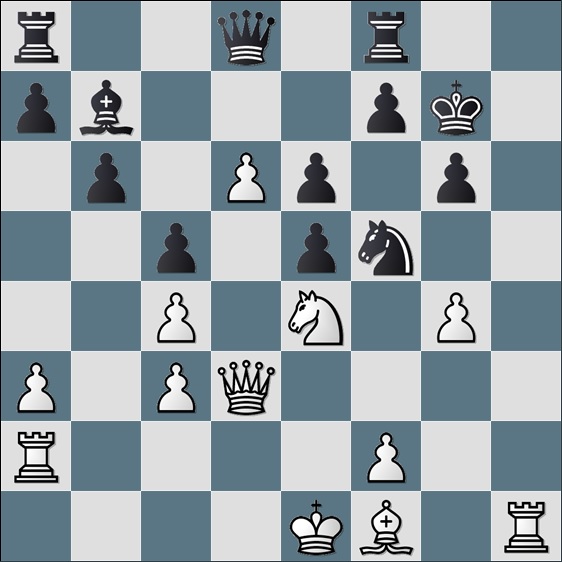
An amazing move! Black calmly keeps his nerves in a critical moment, and even starts counter attacking. Seemingly discounting White’s attack on the kingside, he even suggests that he might be able to pose problems for White in the centre. Great fight!
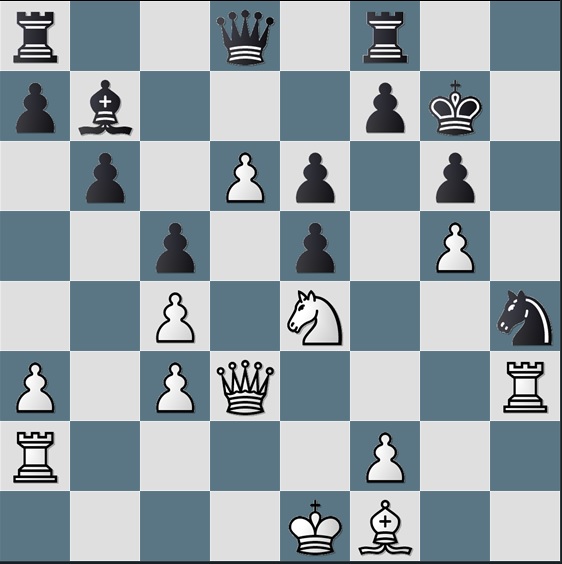
In another important critical moment, Nepo went wrong with 22...Bxe4, giving Ding a clear advantage. Basically, Black could have stopped White’s pieces with any more activity by simplifying with 22...Rh8 23.Nf6 e4! 24.Nxe4 Bxe4! 25.Qxe4 Qxg5 and Black could have been fine.
Latched on to the error, Ding seemed to be steadily on course to a victory for equalising the match square. The important critical moment came at:
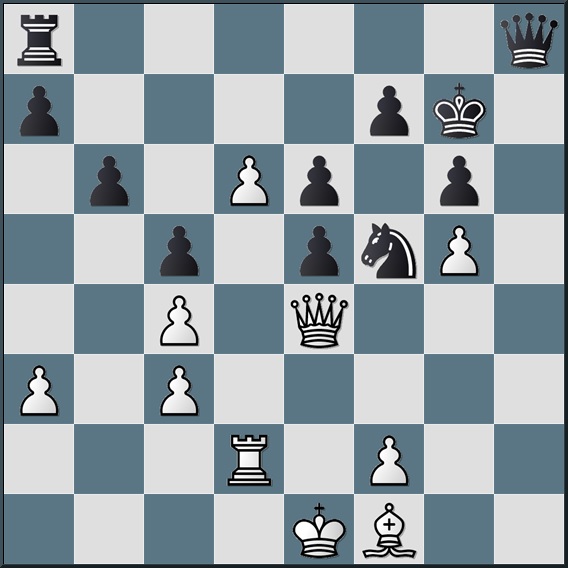
Ding had a clear road to victory here with 26.Rd3, aiming to shift the white rook to h3 and invade on the h-file, or combine with the queen joining the attack with a later Qxe5. But he erred with 25.d7? allowing Nepo to mount a counter attack. What do we infer from this error? That we have add another observation to the list above:
h) Critical Moments need not appear only for the defending side – they might be similar for the attacking side also. The point is, in many positions, if the advantageous side misses an opportunity, his initiative might vanish into thin air.
But the biggest drama of the game came up at:

It is still advantage White, but Black has a path to equality with ...Qh8-f8-e7 and focus on the dangerous d7 pawn. But Nepo unexpectedly blundered with 31...Qh4??
He had probably assumed that he was getting a perpetual check in case White captures 32.Qxd8, but actually he wasn’t: the king had a complicated escaping route: 32...Qe4+ 33.Re2 Qb1+ 34.Kd2 Qb2+ 35.Kd3 Qb1+ 36.Rc2 Qd1 37.Ke4!!
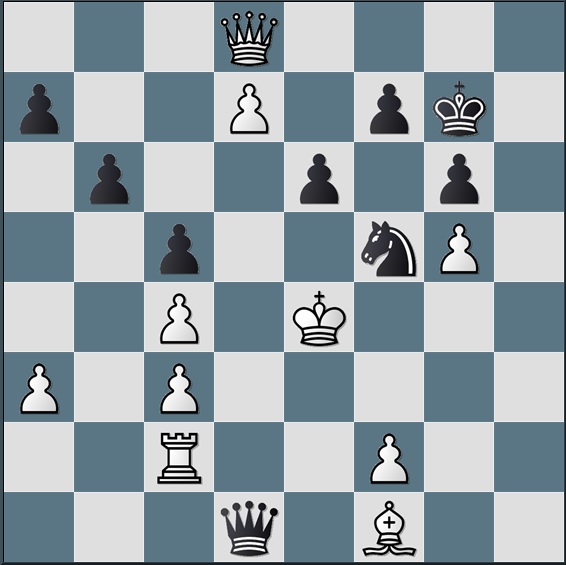
Try to enjoy the analysis: 38...Qxc2+ 39.Bd3 Nd6+ 40.Ke5 [Look at the perilous white king on e5] Qxd3 41.Qf6+ Kh7 42.d8=Q Nxc4+ 43.Kf4 and White wins!
What a variation! But sadly, Ding too couldn’t come up with the right decision at the Critical Moment and declined the rook with 32.Kd1, and the game ended in a fighting draw after almost even play.
During such crucial moments, Anish Giri was wondering at commentary, “Something is off with Ding?” But looking at the game closely, don’t we feel that both players are not performing at their best under pressure.
After an uneven draw in the 9th game, the score is 5 – 4 in favour of Nepo, and no doubt, we have five very interesting games remaining to look forward to.


